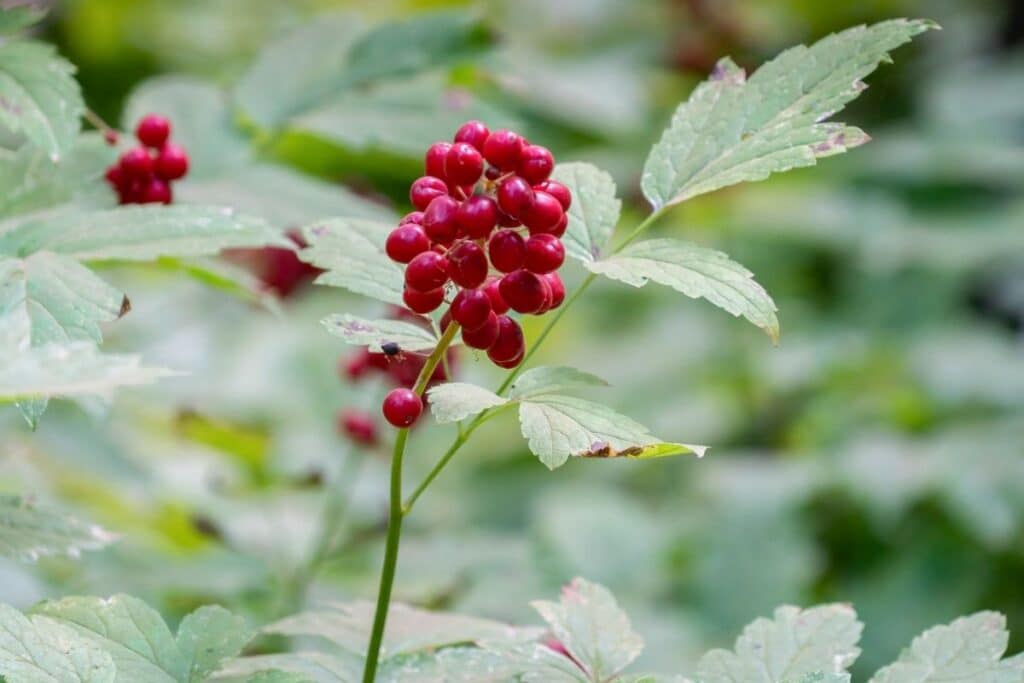Baneberry, scientifically known as Actaea, is a perennial plant that is often seen in North America’s wilderness. This perennial plant can also be cultivated at home, but gardeners must be careful as the plant is highly toxic.
Also referred to as necklace-weed, cohosh, or doll’s eyes, this plant belongs to plants’ Ranunculaceae family.
Continue reading if you would like to know more about this wild bush.
Basic Facts about Baneberry
Officially, there are two species of this plant: the red baneberry plants, which are scientifically referred to as Actaea rubra, and the white baneberry plants, which are scientifically known as Actaea pachypoda.
There is a third species, although it is believed to be a subspecies of the red baneberry called Actaea arguta.
This plant could reach up to 2 feet in height. Regardless of their color or type, the leaves of these plants are almost identical.
According to the USDA hardiness zones, this plant will thrive in zones 3 to 8. They are not considered an invasive species. On the contrary, they are native to the United States and Canada.
Flowers
The plant’s flowers are at the end of a long stem, just above the leaves. These flowers are tiny, yet they release a potent fragrance, thus, they attract plenty of birds and pollinators alike. These flowers will bloom from May to June.
Leaves
All the leaves have at least another set of 5 leaflets. These groups are small, though, as they will only reach up to 2 inches wide and long. All the leaflets will have, in turn, 3 or 4 lobes inside them. These lobes are hairy to the touch.
Fruit
The berries will appear toward the end of summer. They are about an inch long, and they are attached to the green, long stalk. Most of them have a dark spot, which makes it easier to be recognized.
Types of Baneberries
Here are the three types of this plant:
Actaea rubra

Also known as the red berry, red cohosh, or snakeberry, they are usually found in the Pacific Northwest. As its colloquial name suggests, this plant produces red, glossy berries. This type of plant has berries at the beginning of summer.
Actaea arguta
Though similar to the Actaea rubra, this variety has bigger, brighter, and redder berries.
Actaea pachypoda

Also known as the white berry, white cohosh, or doll’s eyes. They are odd-looking, and many people say that these berries are always looking at them when they go to the forests!
Some individuals are even afraid of the plant’s overall look because they are all white and have a smaller black spot.
This type of plant produces berries at the end of summer when temperatures start to go down.
How to Grow Actaea Plants
Gardeners who like low-maintenance plants will be happy to know that the Actaea is an easy-to-care ornamental plant. They will add a splash of color to any landscape, and they are genuinely unique!
These slow-growing perennials are not invasive. They will not damage nature’s balance.
If you would like to plant baneberries, here is what you must keep in mind:
Light Requirements
They prefer shade gardens that can mimic the mature forests where they tend to grow. As a wildflower, they have grown accustomed to shaded areas, and they will not tolerate full exposure to the sun at all.
Soil Needs
If the soil is moist, then the plant will thrive. Ideally, the soil will have plenty of organic matter, and they will love hummus! As a result, if they are planted in rich soil, they won’t need to be fertilized.
Lastly, a thin layer of mulch should be added, especially if winters are hard. Do know that even though the plants will die above the ground, underneath their roots are still alive, therefore, they will regrow as soon as winter is over.
Water
They will need to be watered regularly, especially during hot summers. Since they require plenty of moist soil, they will also require plenty of water to thrive. Yet, the soil must drain well, as they do not like waterlogged soil.
FAQ
Conclusion
Some gardeners will not want to deal with Actaea plants precisely because of their toxicity. Some other gardeners like to face exciting challenges, thus, they will try their luck with these berries.
If you are the latter, remember to be careful and take all the safety measures that will allow you to have a successful garden. Whether you choose to plant a doll’s eyes or red cohosh, make sure you wear gardening gloves!
*image by crbellette/depositphotos







